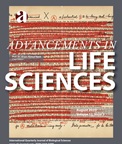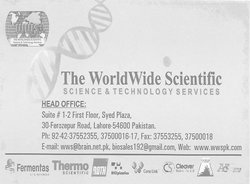Advancements in Life Sciences, volume 12, issue 3 – August 2025
ISSN 2310-5380
IN THIS ISSUE
The third issue of our 12th volume contains multidisciplinary articles from 5 countries. This collection includes one editorial and 29 research papers covering various fields within the life sciences.
You can access the contents of this issue at the following link. Enjoy reading!
https://submission.als-journal.com/index.php/ALS/issue/view/57/showToc
Important note
Completion and release of this issue was originally scheduled for August 2025. However, due to application of additional editorial quality checks, the release was delayed until October 2025.
We are thankful to our authors and readers for their support and understanding. We could never have reached this stage of editorial workflow improvement without their cooperation.
Prof. Dr. Idrees Ahmed Nasir
Chief Editor
Advancements in Life Sciences
International Quarterly Journal of Biological Sciences
www.als-journal.com



